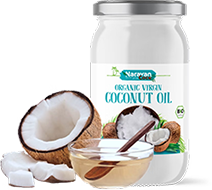Calendula – The Golden Healer
Scientific Name: Calendula officinalis
Common Names: Calendula, Pot Marigold, Marigold
Family: Asteraceae
Overview
Calendula is a radiant herb best known for its vibrant golden-orange flowers and exceptional healing qualities. Native to Southern Europe and widely cultivated around the globe, it has been treasured for centuries in herbal medicine and organic skincare. More than a garden beauty, Calendula is a natural antiseptic, pollinator magnet, and key asset in sustainable farming.
Botanical Description
- Plant Type: Annual (sometimes short-lived perennial)
- Height: 30–60 cm (1–2 feet)
- Leaves: Lance-shaped, slightly sticky, light green leaves
- Flowers: Bright yellow to deep orange daisy-like blooms
- Fragrance: Mild herbal aroma
- Bloom Time: Early summer to late fall
Key Constituents
- Flavonoids
- Triterpenoids
- Saponins
- Carotenoids (e.g., lutein)
- Calendulin and essential oils
Medicinal Properties
Calendula is widely recognized for its soothing, antifungal, and regenerative properties. It's a staple in natural healing and skin care.
- Wound Healing: Promotes skin regeneration and reduces inflammation
- Anti-inflammatory: Eases swelling and irritation
- Antifungal & Antiseptic: Helps prevent and treat infections
- Skin Relief: Treats eczema, rashes, burns, and diaper rash
- Digestive Soothing: Supports healing of ulcers and sore throats
- Menstrual Health: Helps regulate cycles and relieve cramps
🌼 Tip: Calendula-infused oil or balm is a gentle, natural first-aid remedy for skin discomforts.
Culinary & Cosmetic Uses
- Edible Flowers: Petals brighten salads, soups, and teas
- Tea: Calming herbal infusion for internal healing
- Skincare: Used in creams, balms, and ointments for healing and hydration
- Cosmetics: Common in baby care, soaps, and natural beauty products
- Dye: Used as a natural coloring agent in textiles and cosmetics
Cultivation & Growing Conditions
Calendula is hardy, low-maintenance, and ideal for organic growers and home gardeners alike.
Growing Requirements:
- Climate: Prefers cool weather but grows in most climates
- Soil: Well-drained, moderately fertile soil (pH 6.0–7.0)
- Sunlight: Full sun to partial shade
- Watering: Moderate, with good drainage
- Propagation: Grown easily from seeds; blooms in 6–8 weeks
- Harvesting: Harvest flower heads when fully open; use fresh or dry
Role in Organic & Sustainable Farming
- Pollinator Support: Attracts bees and butterflies to gardens
- Pest Management: Repels nematodes and whiteflies
- Soil Health: Helps prevent erosion and improve soil biodiversity
- Low Input: Requires minimal care and thrives without chemical inputs
- Companion Plant: Supports vegetable and herb crops in permaculture systems
Cultural & Historical Significance
- Ancient Remedies: Used by Greeks, Romans, and Ayurvedic practitioners
- Folklore: Known as “herbal sunshine” for lifting mood and skin tone
- Symbolism: Associated with protection, healing, and longevity
Economic & Commercial Importance
- High demand in organic skincare and wellness markets
- Used in artisanal soaps, salves, oils, and tinctures
- Value-added potential as dried flowers, powders, and infusions
Conclusion
Calendula is a gentle, golden remedy with a powerful presence in healing and horticulture. It’s an essential herb in natural medicine, organic skincare, and eco-friendly farming practices. Easy to grow, full of health benefits, and bursting with color, Calendula truly lives up to its name as “the golden healer.”
 Fishing Reels Spin
1 × $100.00
Fishing Reels Spin
1 × $100.00
 Spoon lure tackle Baits
1 × $19.00
Spoon lure tackle Baits
1 × $19.00
 Fishing Reels Globeride
1 × $10.00
Fishing Reels Globeride
1 × $10.00
